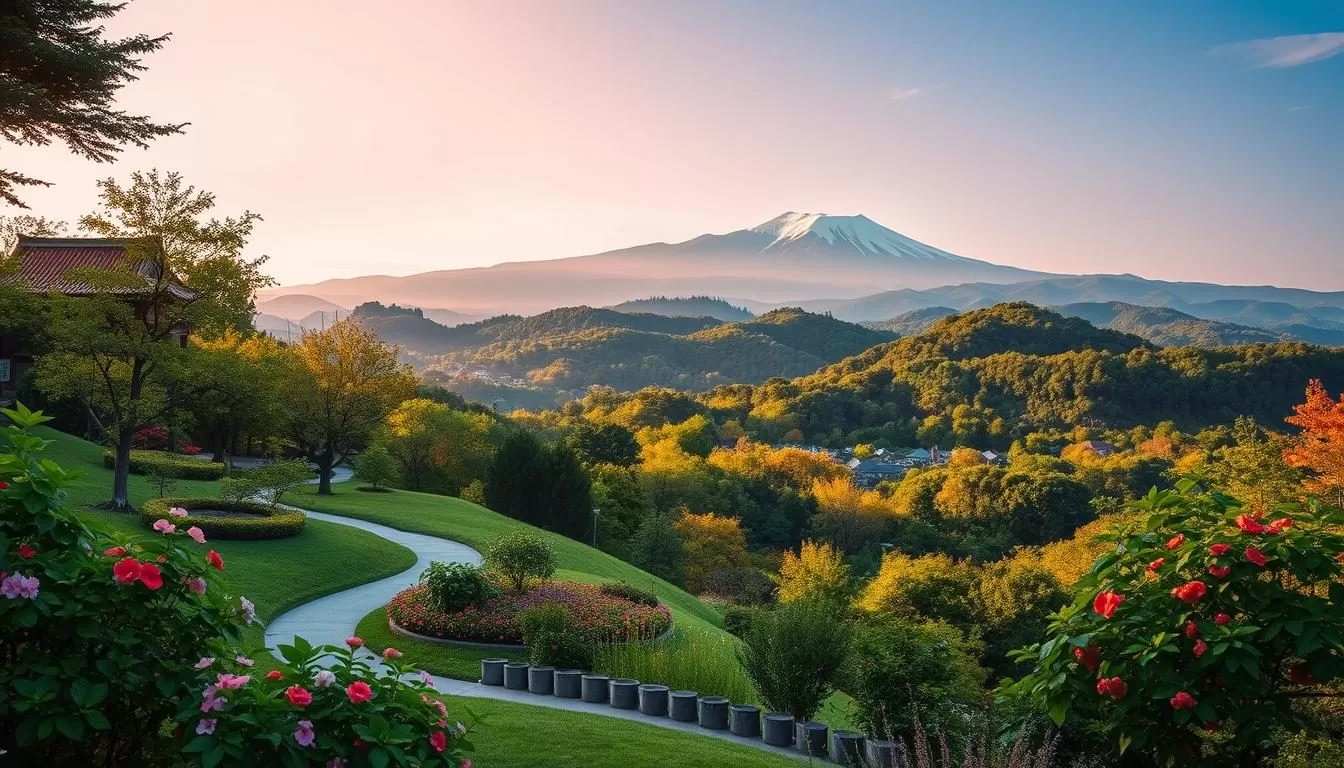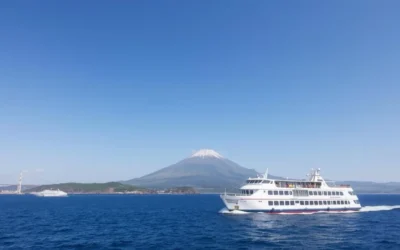✓ Accommodations✓ Flights✓ Rental Cars
Located just north of Tokyo, Saitama Prefecture offers a unique blend of traditional Japanese culture and natural beauty throughout the year. However, the experience can be greatly influenced by the time of your visit.
Understanding the seasonal variations in Saitama is crucial for making the most out of your trip. The region experiences four distinct seasons, each with its own charm and weather patterns.
Whether you’re looking forward to enjoying cherry blossoms, autumn foliage, or participating in cultural festivals, knowing what to expect from the weather can help you pack appropriately and maximize your enjoyment of outdoor activities and sightseeing opportunities.
This guide will explore the month-by-month weather conditions and highlight the seasonal attractions to help you plan your perfect trip.
Understanding Saitama Prefecture’s Geography and Climate
To truly appreciate Saitama Prefecture, it’s essential to understand its geographical characteristics and the seasonal variations that define its climate. This understanding will help you plan your trip more effectively and enhance your overall experience.
Location and Geographical Features
Saitama Prefecture is located in the Kantō region of Japan. Its geography is characterized by a mix of urban and rural areas, with the western part being more mountainous and the eastern part being relatively flat. The prefecture is landlocked, bordered by Tochigi Prefecture, Gunma Prefecture, Nagano Prefecture, Yamanashi Prefecture, Tokyo, and Chiba Prefecture.
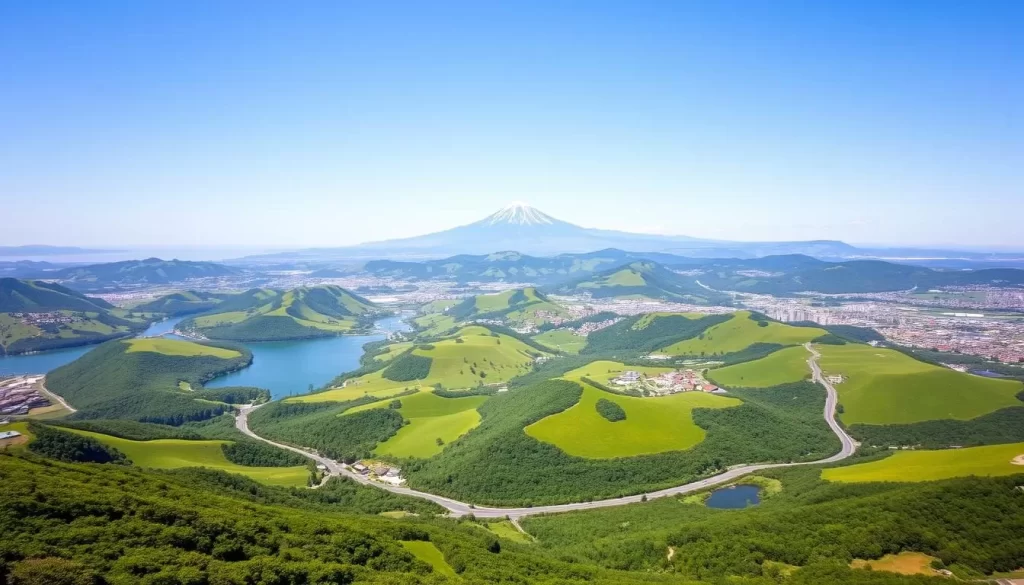
Climate Overview: Four Distinct Seasons
Saitama Prefecture experiences a temperate climate with four distinct seasons: spring, summer, autumn, and winter. Each season brings unique weather patterns and attractions.
- Spring (March to May) is mild, with temperatures ranging from 10°C to 23°C (50°F to 73°F), and is famous for cherry blossoms.
- Summer (June to August) is hot and humid, with temperatures often exceeding 30°C (86°F).
- Autumn (September to November) offers pleasant weather, with temperatures cooling from 27°C to 12°C (81°F to 54°F), and is known for its foliage.
- Winter (December to February) is relatively dry, with occasional snowfall in the western mountainous regions, and temperatures ranging from 12°C to 2°C (54°F to 36°F).
| Season | Months | Temperature Range (°C) | Notable Features |
|---|---|---|---|
| Spring | March to May | 10°C to 23°C | Cherry Blossoms |
| Summer | June to August | Often exceeds 30°C | Hot and Humid |
| Autumn | September to November | 27°C to 12°C | Foliage |
| Winter | December to February | 12°C to 2°C | Occasional Snowfall |
Spring in Saitama: Cherry Blossoms and Mild Weather
The spring season in Saitama is characterized by cherry blossoms and comfortable temperatures, making it an ideal time to visit. During this period, the weather is mild, and the landscapes are adorned with blooming flowers, creating a picturesque scenery.
March: Early Spring Awakening
In March, Saitama Prefecture experiences the early stages of spring. The weather starts to warm up, and the average high temperature begins to rise, signaling the end of the cold winter months. It’s a great time to enjoy the outdoors as the landscape transforms with the blooming of early spring flowers.
April: Peak Cherry Blossom Season
April is the peak month for cherry blossom viewing in Saitama. The famous cherry blossoms are in full bloom, creating a stunning landscape. Golden Week, one of Japan’s busiest travel seasons, takes place at the end of April and the beginning of May. While it can be a busy time, the beauty of the cherry blossoms makes it a worthwhile visit. You can enjoy the pleasant weather and the vibrant atmosphere as the locals celebrate the blossoms.
![]()
May: Pleasant Temperatures Before Rainy Season
May offers some of the most comfortable weather conditions in Saitama Prefecture. Daytime temperatures average a pleasant 23°C (73°F), while nighttime temperatures are around 15°C (59°F). After Golden Week, tourist spots become less crowded, making mid to late May an excellent time to visit popular attractions. The landscape is lush and green, and it’s an ideal time for outdoor activities like hiking or exploring historical sites before the summer heat and rainy season arrive.
- You can enjoy the comfortable weather, with average highs of 23°C (73°F) and lows of 15°C (59°F), making it perfect for outdoor activities.
- After Golden Week, the crowds dissipate, allowing for a more serene experience at popular tourist spots.
- The lush greenery and blooming vegetation create a beautiful landscape throughout Saitama’s parks and natural areas.
- Late May marks the transition toward the rainy season, with increasing humidity and occasional rain showers.
- It’s an ideal time for hiking in western Saitama’s mountains or exploring historical sites like Kawagoe’s preserved Edo-period streets.
Summer in Saitama Prefecture: Heat, Humidity, and Festivals
Saitama Prefecture’s summer is characterized by its hot and humid weather, punctuated by numerous festivals. This season, which spans from June to August, brings a unique blend of cultural events and challenging climatic conditions.
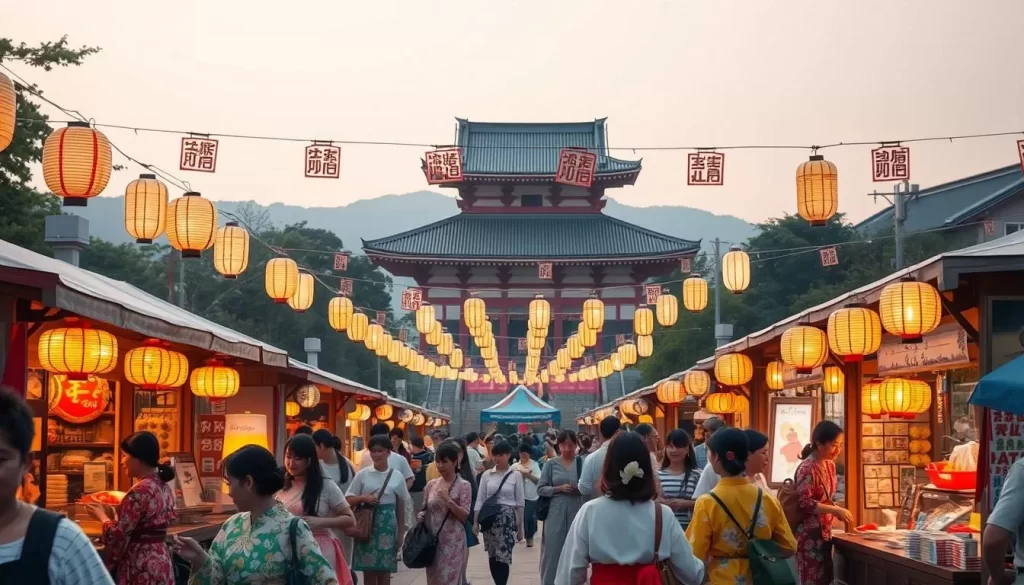
June: Rainy Season and Lush Landscapes
June marks the beginning of summer in Saitama, but it’s also the month of the rainy season. The prefecture experiences a significant amount of rainfall, leading to lush and verdant landscapes. While the rain might be a deterrent for some, it’s an excellent time for those who enjoy the greenery and don’t mind the wet weather.
July: Hot Weather and Summer Festivals
As July arrives, the weather in Saitama becomes hot and humid, with temperatures often exceeding 30°C (86°F). Despite the heat, this month is a great time to experience Saitama’s vibrant culture, with numerous summer festivals taking place. These festivals, or “matsuri,” feature traditional dances, food stalls, and fireworks displays, offering a refreshing respite from the heat.
August: Peak Heat and Obon Festival
August is the peak of summer in Saitama, with hot and humid conditions prevailing throughout the month. Daytime temperatures often soar above 31°C (88°F), while nighttime temperatures remain around 24°C (75°F). This month is significant for the Obon Festival, a Buddhist holiday honoring the spirits of one’s ancestors. The festival features festivals with traditional dances, lanterns, and fireworks, creating a magical atmosphere. It’s also a peak time to visit Saitama, with many locals and tourists enjoying the events, despite the challenging weather.
Some key aspects to consider when visiting Saitama during the summer include:
- The Obon Festival in mid-August, which is a significant cultural event.
- The numerous festivals and fireworks displays throughout the prefecture.
- The hot and humid weather, which can be challenging but is a characteristic of the season.
- The peak tourist season, especially during the Obon week, which can lead to crowded transportation and higher accommodation prices.
- The opportunity to enjoy cooler mountain areas and water parks, providing relief from the heat.
Visiting Saitama during the summer can be a rewarding experience, with its rich cultural heritage and vibrant festivals. By understanding what to expect during this time of year, you can better plan your trip and make the most of your visit.
Autumn in Saitama: Colorful Foliage and Comfortable Weather
The arrival of autumn in Saitama marks the beginning of a season filled with natural beauty and comfortable weather. As the summer heat dissipates, the prefecture transforms into a picturesque landscape with vibrant autumn foliage.
September: Typhoon Season and Early Autumn
September is a transitional month in Saitama, with the lingering effects of summer gradually giving way to the early signs of autumn. While it’s still relatively warm, the weather can be unpredictable due to typhoon season. Visitors should be prepared for occasional rain showers and potential typhoon warnings.
October: Ideal Weather and Fall Colors Begin
October brings more stable weather, with comfortable temperatures and fewer rainy days. The autumn foliage starts to become more pronounced, with the changing leaves creating a beautiful backdrop for outdoor activities. Average daytime highs are around 18°C (64°F), making it an ideal time for hiking and exploring Saitama’s natural attractions.
November: Peak Autumn Foliage
November is widely regarded as one of the best times to visit Saitama, with the autumn foliage reaching its peak. The weather is generally mild and dry, with daytime temperatures averaging 17°C (63°F) and nighttime lows around 10°C (50°F). Popular spots like Nagatoro’s riverside gorge and Chichibu’s mountain temples are particularly stunning during this time.
Some of the prime foliage viewing spots in Saitama include:
- Nagatoro’s riverside gorge, known for its vibrant autumn colors
- Chichibu’s mountain temples, offering a serene and picturesque experience
- Omiya Park, where maple trees create stunning reflections in the pond waters
November offers a perfect balance of comfortable temperatures and natural beauty, making it ideal for outdoor activities, photography, and exploring both natural and cultural attractions. While domestic tourism increases around popular autumn leaf viewing spots, the overall number of tourists remains relatively low compared to cherry blossom season, providing a more relaxed experience at many attractions.
| Month | Average Daytime High | Average Nighttime Low | Rainy Days | Sunny Days |
|---|---|---|---|---|
| September | 23°C (73°F) | 15°C (59°F) | 30% | 40% |
| October | 18°C (64°F) | 10°C (50°F) | 25% | 50% |
| November | 17°C (63°F) | 10°C (50°F) | 20-25% | 55-60% |
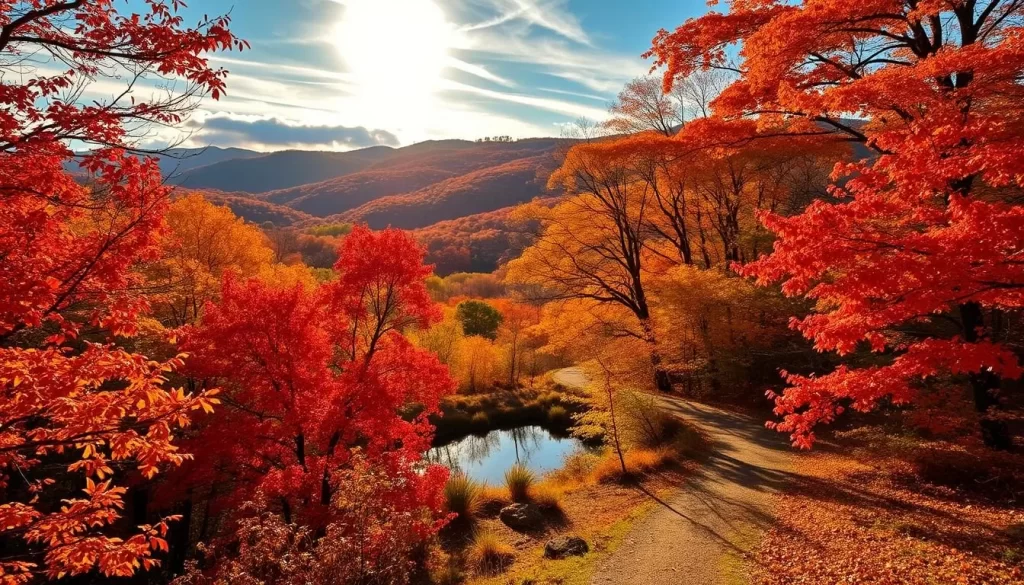
Winter in Saitama Prefecture: Crisp Days and Occasional Snow
As winter sets in, Saitama Prefecture transforms into a serene landscape with crisp days and occasional snow. This season brings a unique charm to the region, with cold temperatures, clear skies, and a few festive events.
December: Winter Begins with Dry Weather
December marks the beginning of winter in Saitama, characterized by dry weather and cooler temperatures. Daytime highs average around 12°C (54°F), while nighttime lows can drop to around 2°C (36°F). The dry conditions make it an ideal time for outdoor activities before the coldest months arrive.
January: Coldest Month with Clear Skies
January is the coldest month in Saitama, with average daytime highs of 9°C (48°F) and nighttime lows of around 0°C (32°F). The clear skies during this month offer great opportunities for sightseeing, as the cold weather keeps the crowds away, making popular spots more accessible.
February: Winter Festivals and Early Plum Blossoms
February continues the winter pattern in Saitama with cold temperatures, averaging daytime highs of 10°C (50°F) and nighttime lows around 2°C (36°F). This month brings the first signs of spring with the blooming of plum blossoms (ume) in parks and gardens, creating beautiful early floral displays. Several winter festivals take place, including illumination events and snow festivals in the western mountainous regions. The Chichibu area offers winter sports opportunities, such as skiing and snow hiking, when snow conditions permit.
Here’s a summary of the average weather conditions in Saitama during the winter months:
| Month | Average Daytime High | Average Nighttime Low |
|---|---|---|
| December | 12°C (54°F) | 2°C (36°F) |
| January | 9°C (48°F) | 0°C (32°F) |
| February | 10°C (50°F) | 2°C (36°F) |
Saitama Prefecture, Japan: Best Months for a Weather-Savvy Trip
The key to a memorable trip to Saitama lies in choosing the right time to visit, considering its varied weather conditions. Saitama Prefecture experiences a temperate climate with four distinct seasons, each offering unique experiences and challenges.
Top Recommendation: Late March to May (Spring)
Spring is arguably the best time to visit Saitama Prefecture. Late March to May offers pleasant weather, with mild temperatures and the famous cherry blossoms. During this period, you can enjoy outdoor activities like hiking and sightseeing without the intense heat of summer.
The cherry blossom season, typically peaking in late March to early April, is a major draw. Popular spots like Chichibu and Kawagoe are less crowded than more famous locations in Japan, providing a more relaxed experience.
| Month | Weather | Activities |
|---|---|---|
| Late March | Mild temperatures, cherry blossoms | Cherry blossom viewing, hiking |
| April | Pleasant temperatures, blooming flowers | Festivals, outdoor activities |
| May | Comfortable weather before rainy season | Sightseeing, outdoor events |
Runner-Up: October to November (Autumn)
Autumn is another excellent season to visit Saitama, with October to November being the prime months. The weather is generally comfortable, with the autumn foliage reaching its peak in November. This period is ideal for enjoying nature’s beauty, with fewer tourists than in the spring.
You can enjoy koyo (autumn leaves) at various spots throughout the prefecture, including the mountains and parks. The clear skies and comfortable temperatures make it an ideal time for outdoor activities.
Weather Considerations for Other Seasons
While spring and autumn are the best times to visit, summer and winter have their unique charms and challenges. Summer brings the rainy season in June, followed by intense heat and humidity. Typhoon season in September can impact travel plans, though Saitama’s inland location mitigates some of the worst effects.
Winter offers a serene landscape, with occasional snow in the western mountainous areas. The cold but generally dry and sunny conditions make it a good time for those who prefer fewer tourists and clearer mountain views.
Understanding the time of year you plan to visit Saitama Prefecture is crucial for making the most of your trip. Whether you prefer the vibrant festivals of summer or the serene landscapes of winter, being prepared for the weather conditions will enhance your travel experience.
Weather Challenges and How to Prepare
When planning your trip to Saitama Prefecture, it’s crucial to be aware of the potential weather challenges you might face. Saitama’s climate is characterized by distinct seasons, each with its unique conditions that can impact your travel plans.
Navigating the Rainy Season
During the rainy season, which typically occurs in June and July, Saitama experiences significant rainfall. To navigate this period, stay informed about weather forecasts and consider carrying waterproof gear. The lush landscapes that follow the rain can be particularly beautiful, making it a great time for photography.
Dealing with Summer Heat and Humidity
Summer in Saitama can be hot and humid, especially in July and August. To cope with the heat, stay hydrated by drinking plenty of water, wear light, breathable clothing, and plan indoor activities during the hottest parts of the day. Many local festivals during this time offer a cool respite and a chance to enjoy traditional Japanese culture.
Typhoon Season Precautions
September is still within typhoon season in Saitama Prefecture. Typhoons can bring heavy rain and strong winds, potentially disrupting travel plans. Stay updated with local weather forecasts, have backup plans for outdoor activities, and be prepared with basic supplies like water and snacks in case of a typhoon.
| Weather Condition | Preparation Tips |
|---|---|
| Rainy Season | Carry waterproof gear, stay updated with weather forecasts |
| Summer Heat | Stay hydrated, wear breathable clothing, plan indoor activities during peak heat |
| Typhoon Season | Monitor weather forecasts, have backup plans, stock up on supplies |
Must-Visit Seasonal Attractions in Saitama
Whether you’re visiting in the spring, summer, autumn, or winter, Saitama Prefecture has a wealth of experiences waiting for you. Each season brings its unique charm and attractions, making Saitama a year-round destination.
Spring: Cherry Blossom Viewing Spots
Spring is a beautiful time in Saitama, with the cherry blossoms being a major highlight. You can enjoy the stunning views at various parks and gardens.
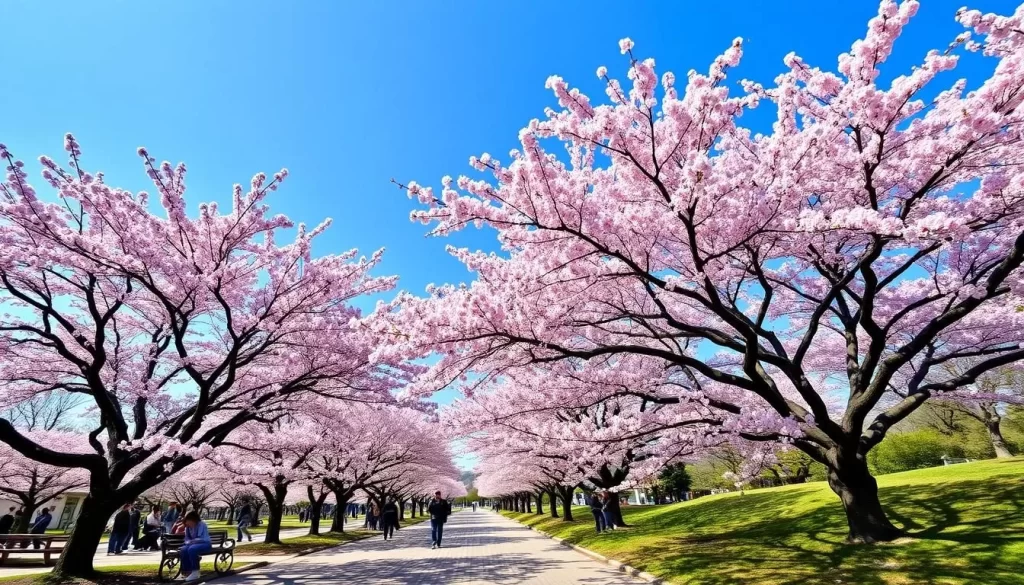
Some of the best spots include Omiya Park, which is famous for its cherry blossom viewing, and other scenic locations throughout the prefecture.
Summer: Festivals and Outdoor Activities
Summer in Saitama is vibrant, with numerous festivals and outdoor activities. You can experience the local culture by attending one of the many summer festivals.
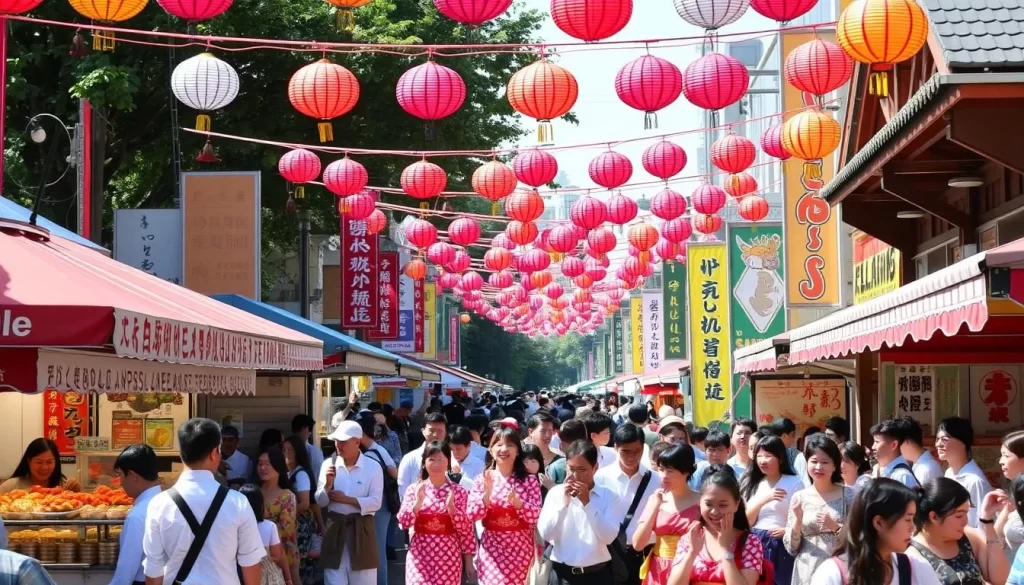
These events showcase the community spirit and offer a fun way to enjoy the warm weather.
Autumn: Foliage Viewing Locations
Autumn brings a kaleidoscope of colors to Saitama, making it an ideal time for foliage viewing. You can enjoy the fall colors at various locations, including parks and mountains.
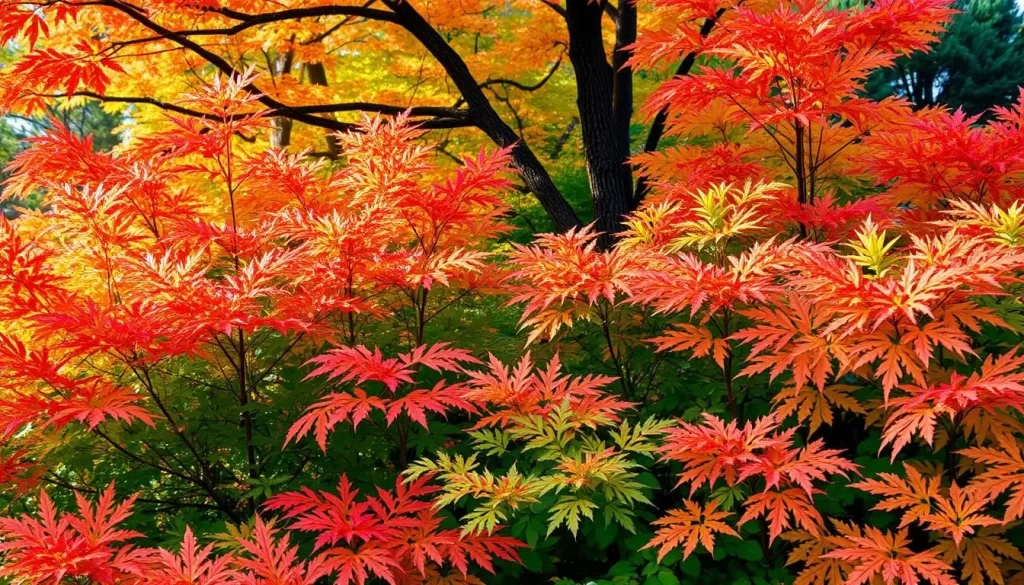
The changing leaves create a picturesque landscape, perfect for one Japan like experiences.
Winter: Hot Springs and Winter Illuminations
Winter in Saitama offers a serene landscape, with the western mountainous regions occasionally receiving snow. You can warm up at one of the many hot springs (onsen) or enjoy the winter illuminations.
Image of a hot spring or winter illumination in Saitama Prefecture
Facilities like Seibu Chichibu Onsen offer therapeutic warm baths with mountain views, making it a perfect hot spring experience. The prefecture also hosts several spectacular winter events, including the Chichibu Night Festival, which is one Japan‘s most famous winter celebrations.
Throughout the year, Saitama Prefecture offers a diverse range of attractions and activities, ensuring that there’s something for everyone, regardless of the season.
Conclusion: Planning Your Weather-Perfect Trip to Saitama
As you plan your trip to Saitama Prefecture, understanding the seasonal weather patterns is key to a memorable experience. The best time to visit is during spring (late March to May) and autumn (October to November), when the weather is comfortable and natural beauty is at its peak.
Each season offers unique experiences: spring brings cherry blossoms, summer delivers vibrant events, autumn showcases colorful foliage, and winter provides clear skies. Consider your preferences and priorities when choosing when to visit Japan, and prepare accordingly by packing suitable clothing and staying informed.
Saitama’s proximity to Tokyo makes it an excellent addition to any trip to Japan, offering authentic cultural experiences and historical attractions throughout the year with fewer crowds.
The above is subject to change.
Check back often to TRAVEL.COM for the latest travel tips and deals.
